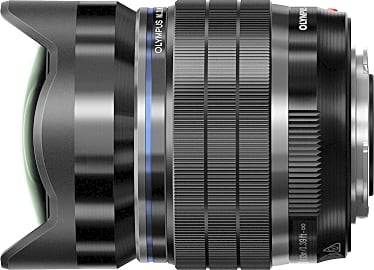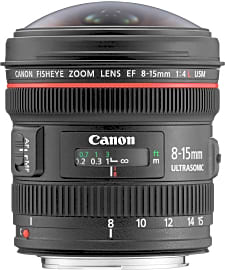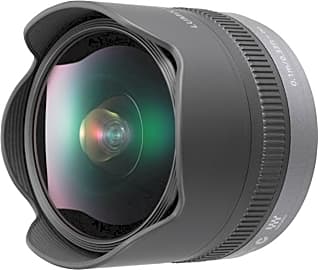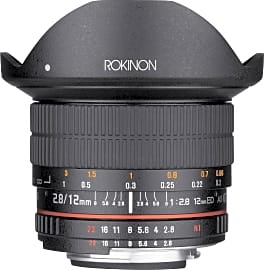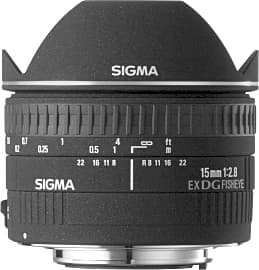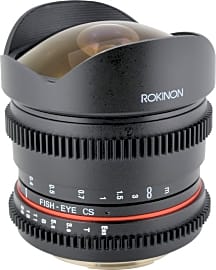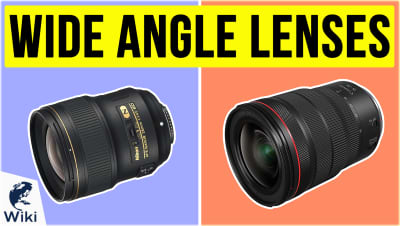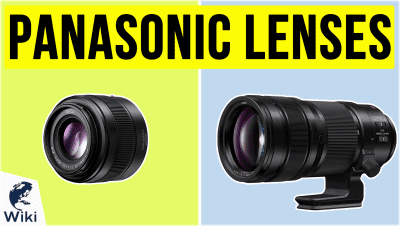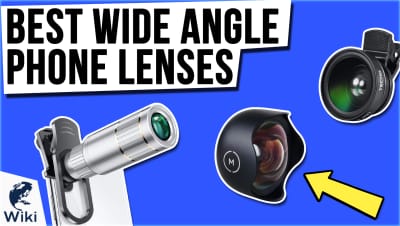The 9 Best Fisheye Lenses

This wiki has been updated 41 times since it was first published in April of 2015. Whether you are a professional photographer or a hobbyist, there's sure to be a lens on this list that will help you create stunning images. They are ideal for all kinds of pictures and videos, including close-ups and action shots, wide interiors and, of course, landscape panoramas. We've ranked our selections by sharpness, speed, build quality, and low-light performance. When users buy our independently chosen editorial selections, we may earn commissions to help fund the Wiki.
Editor's Notes
May 06, 2021:
It was another slow year for fans of fisheye glass, and for the second year running we retained all of our existing options for this category. We did, however, beef up our roster by one model with the new inclusion of the Sigma EX DG 15mm f/2.8. It certainly isn’t an option that’s going to dethrone any of our top three, but, since there’s a good chance that a lot of our users are considering this purchase for infrequent use, we thought it was worth including as a wallet-friendly alternative for those who aren’t ready to cough up for a more expensive choice. It’s designed for use with full-frame DSLRs, so you shouldn’t need to worry about it cropping in on your images, and versions are available for five major camera companies.
If a wide field of view is a must for you, but you aren’t necessarily hung up on the fisheye effect, then you might also be interested in checking out our list of wide angle lenses.
January 14, 2020:
Given the fact that the fisheye lens isn't among the most sought after tools in modern photography, the big companies like Nikon and Canon haven't introduced new models to the market in some time. All the selections on our previous list have remained, largely due to the fact they represent either the best that a given system has to offer or they boast a particularly unusual feature, like the body cap pancake design of the Olympus 9mm f/8.0.
Some new wide angle lenses have hit the market in recent years from third-party manufacturers, like Irix and Neewer, but these either perform too poorly or direct their light into rectilinear images, which by definition aren't fisheye no matter their focal length. One new company that did make the cut is Altura, and the Altura Photo 8mm f/3.0 Professional is right up there with the likes of Rokinon's manual focus stills lenses, with a fast aperture and solid build quality.
Special Honors
GoPro Action Cams There's no denying that you can achieve better picture quality with a premium body and glass from a top camera company, but depending on what your intended use and budget is, you might find that one of GoPro's action cams can meet your needs, and be a lot of fun, too. gopro.com
Moment Phone Lenses They may not be cause for professionals to start packing their DSLRs up and heading to the pawnshop, but this company's offerings can give a surprising boost to your smartphone-photography game. They have a few styles to choose from, including 14- and 15-millimeter fisheye units. shopmoment.com
The World Through The Eyes Of A Fish
I remember growing up hearing that goldfish, in particular, had about a 30-second memory span.
There's a long-standing myth out there that fish don't have especially good memories. I remember growing up hearing that goldfish, in particular, had about a 30-second memory span. It is, however, a myth, as modern research claims fish can retain information and training for up to five months. Still, through the eyes of a fish, after five months, everything looks new again.
Fisheye lenses carry with them the wide field of view with which most fish would see. If a fisheye lens also carried with it the memory issue, well, your photographs would have to self-destruct after five months like a dossier from Mission Impossible.
To be more specific about a fisheye lens, these are the lenses with wide fields of view and a clear amount of barrel distortion, making the video and images captured through them appear evenly curved all around the sides. The shorter the focal length, the wider the angle, and the further distorted the edges of the image will be.
There are wide angle lenses out there that are not technically fisheye lenses, but they can only reach a certain focal length before they, too, begin to capture a little distortion.
Fisheye lenses achieve their unique effect by utilizing a much larger, fatter, more overtly convex front lens element. Light hits this lens element from a far greater number of angles than a rectilinear lens captures. That light funnels through a system of additional lens elements designed to focus the image to the size of the camera's sensor while reducing a distorting phenomenon called field curvature. The result is a sharp, evenly distorted image that may just convince you that you can breathe underwater.
The Power Of The Third Party
For one reason or another, the United States has had a whale of a time trying to establish a third party for its presidential races. There have been minor successes throughout the years, but the two-party system has, by and large, remained tactically unassailable. Fortunately, in the world of optics, third parties have finally made their way into the serious conversation about quality glass.
For many years, companies like Samyang, Sigma, and Tamron made perfectly fine lenses, but if you had the extra money, it was wise to bet on brand.
That means that if you buy a 14mm lens designed for a full frame camera and pop it on your APS-C body, you'll get a 21mm image.
In the past decade, however, these companies have caught up to the heels of the big manufacturers, creating lenses that rival the name brands in speed and image quality, as well as price. In fact, if you take a close look at our list, only one of our recommendations is made by a specific camera company for its specific system; everything else is third-party.
Whatever brand you choose to go with, there are a few key differences among the lenses on our list that ought to guide your hand to the perfect selection. The first of these is focal length. As I mentioned earlier, smaller focal lengths (8mm, say, as opposed to 14mm) will get you wider fields of view with a greater sense of barrel distortion. That width is partially predicated on the size of your camera's sensor, with smaller sensors multiplying the focal length by that sensor's crop factor.
Most introductory-level DSLRs have APS-C sized sensors, which multiply the focal length of a full-frame lens by about 150%. That means that if you buy a 14mm lens designed for a full frame camera and pop it on your APS-C body, you'll get a 21mm image.
There are a couple of lenses on our list that are specifically made for APS-C sensors, though, and if you own a camera with a full frame sensor, these won't fill the sensor with an image, and you'll get the same crop factor applied to your shot. In the previous example of a full-frame lens on an APS-C body, you lose barrel distortion. In this case, you keep closer to 100% of it.
The Whole Sky In A Single Image
Despite a century of experimentation and manufacture, it took lens makers until the 1920s to produce what we would now consider to be a fisheye lens. They did so with the intention of being able to capture the entirety of the sky in a single photograph, and the lenses were primarily used for this type of photography, meteorology, and astronomy for many years.
With a good fisheye lens, you could get right on top of your actors and still see a great deal of the setting.
More recently, the fisheye lens found popularity among filmmakers who sought a larger viewing angle and a closer filming experience to their subjects. With a good fisheye lens, you could get right on top of your actors and still see a great deal of the setting.
The 1990s experienced a boom in the popularity of these lenses, particularly among music video directors, but the viewers soon connected their unique look with the very specific music and fashion styles of the day, and, by the early aughts, the look seemed dated.
More recently, a video image bearing fisheye barrel distortion has found new popularity thanks to the explosive sales of GoPro brand and other action cameras, whose fields of view are, almost by necessity, all-inclusive. And since these cameras are mostly water proof, the average consumer can easily get an underwater look through the eyes of a fish.


